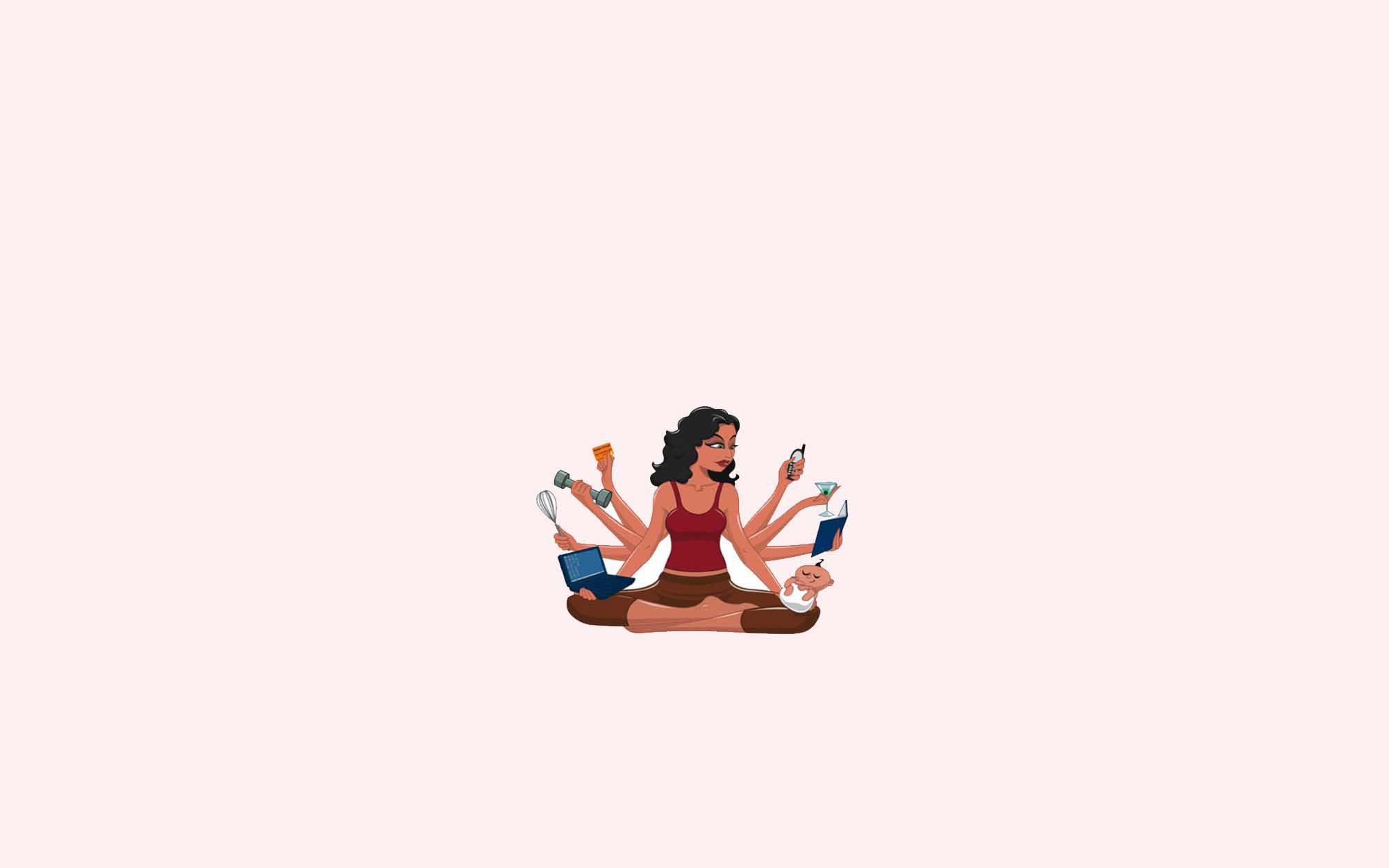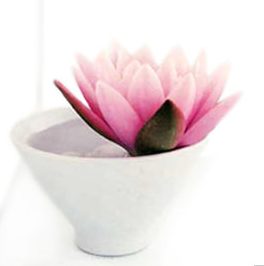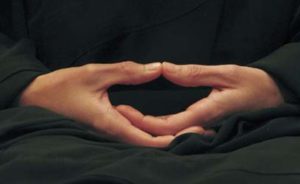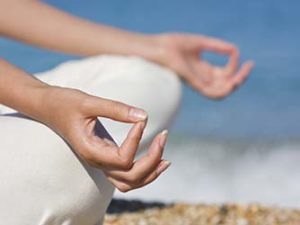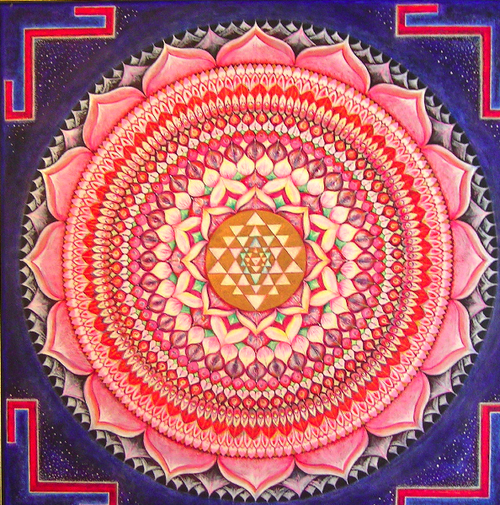Overview / Itinerary:
Part 2
9. Meditation – a Cornerstone of Inner Growth
and the Evolution of Consciousness
- Beta — Waking Consciousness & Reasoning
- Alpha — Deep Relaxation
- Theta — Light Meditation & Sleeping
- Delta — Deep Sleep & Very Deep Meditation
- Gamma – Deep Insight
– Meditation as Concentration Exercise
– Meditation as Open Awareness
– Meditation as Awareness of Awareness
– Discovering the “I Am” Essence
– Dealing with specific challenges in Meditation
– Beneficial “side-effects” of meditation
10. Pitfalls, sidetracks and dead-end-streets on the Spiritual Path
11. How to live Spirit-oriented in busy busy 21. Century
– Time
– Lifestyle choices
– Priorities
– Some simple tricks to make it happen
– Children
– Career / Professional life
– Work / Life Balance
– Fun
12. Life Cycles and Stages of Consciousness
13. What is the Future of Spirituality
– Spirituality is the new “religion” of the 21. century
– “Trans-personal” Spirituality
– Spiritual Activism
– Deep Ecology
– WeSpace Practice
– Intentional Spiritual Community
14. What is the ultimate meaning of being alive
9. Meditation – a Cornerstone of Inner Growth / the Evolution of Consciousness
“Oh”, you say: “I know how to meditate! I sit down cross legged in the lotus position, pretend to be a yogi now and place my hands on my knees. I close my eyes and that’s how i meditate.”
Yes sure, that’s a good start. But what happens after you have closed your eyes?
That is actually what the meditation is all about ; )
The are many ways to meditate and meditation can certainly happen while you are sitting cross legged on the cushion. And it could also happen when you sit on a comfortable chair.
You can probably even be in a meditative state while standing up – standing still or walking slowly – and with your eyes open.
In my opinion meditation is more about a certain state of mind, a specific focus and direction of awareness, an alignment of brainwave patterns, an expansion of consciousness than it is about a specific posture or outer ritual.
The benefits of such a meditation will not be experienced immediately, but they will be plentiful. I can say this from long experience.
And for the beginning – the first ten years or so (I am kidding ; ) – it is very highly recommended to establish a clear and regular practice, to establish a daily pattern & ritual that will become second nature over time.
This blog entry is not intended to be a meditation course. This would be another – interesting – thing to do. But there are a few general principles that apply universally, that are worth considering when you intend to practice meditation.
I believe that the best way to really learn to meditate is with an experienced teacher, somebody who can help you to choose a technique that fits your needs, personality structure and level of consciousness. Such a person can introduce the technique in subtle ways that a book never can do, can be there so you can reflect on your experiences and inspire you when you get stuck.
For some people being in a regular meditation group can also be helpful.
Here some attitudes that will get you going:
– Do it: All meditation involves the conscious use of time and attention. Bring your attention to the discipline as directly, authentically and full-heartedly as it is possible for you.
– Open up to it: Meditation is all about the limitless possibilities of the present moment. Every time you bring your attention to the practice, you arrive in the here and now. Be open to the miracle of the present moment.
– Don’t judge it: Meditation is not a contest, you don’t have to prove something. To meditate is not to oppose or escape the scattered tendencies of the mind, but to do something else with your attention. Just bring your attention back to your practice.
– Keep doing it: Don’t be concerned about the rate of your progress. Simply trust the process and apply yourself sincerely and continuously to it.
– Wake up and enjoy, its natural: Meditation presents a opportunity for awakening, strengthening, deepening, relaxing and enhancing the awareness.
Within five minutes or so you can reach a basic meditative state that is distinct different from waking, dreaming or deep sleep. It is a fully alert and relaxed condition of the body and mind which has many beneficial effects to your health and wellbeing.
The brain is the central processing unit of our body and plays a key role in translating the content of the mind (our thoughts, feelings, attitudes, beliefs, memories and imagination) into complex patterns of nerve cell firings and release of brain chemicals. These complex patterns of nerve cell firing and chemical release are called neuro-signatures, and they intimately affect the physiology and biochemistry of the body – and the actions that follow suit.
The relationship between the brain and the mind is complex. I think that the brain is the physical manifestation of the mind. And the mind is the expression of the soul. It is mind which thinks, feels, is aware, comprehends, directs. I think that mind – or the psychic being, as it has been called by Indian Integral Yogis – can be looked upon as an evolving consciousness. Brain is a physical organ of the body, which the soul occupies to live a terrestrial life.
The spirit, the soul, the mind, the brain, the body. This is the magical chain reaction ; )
The alignment of those would be the vision of the enlightened Human Being.
Hu-man, which literally means God-man in some ancient languages.
An interesting thing about mind – brain alignment is the science of brainwave patterns.
Neuroscience distinguishes between 5 brainwave patterns/frequencies, each frequency is measured in cycles per second (Hz) and has its own set of characteristics representing a specific level of brain activity and a unique state of consciousness.
1. Beta (14-40Hz) — Waking Consciousness & Reasoning
Beta brain waves are associated with normal waking consciousness and a heightened state of alertness, logic and critical reasoning. While Beta brain waves are important for effective functioning throughout the day, they also can translate into stress, anxiety and restlessness.
2. Alpha (7.5-14Hz) — Deep Relaxation
Alpha brain waves are present in deep relaxation and usually when the eyes are closed, when you’re slipping into a lovely daydream or during light meditation. It is an optimal time to program the mind for success and it also heightens your imagination, visualization, memory, learning and concentration.
It is the gateway to the subconscious mind and lies at the base of your conscious awareness.
Alpha is the frequency of the intuition, which becomes clearer and more profound the closer the brain gets to the next state, Theta.
3. Theta (4-7.5Hz) — Meditation & Sleeping
Theta brain waves are present during deep meditation and light sleep, including the important REM dream state.
A sense of deep spiritual connection and unity with the universe can be experienced at Theta.
4. Delta (0.5-4Hz) — Deep Sleep & Very Deep Meditation
The Delta frequency is the slowest of the frequencies and is experienced in deep, dreamless sleep and in very deep, transcendental meditation where awareness is fully detached from the body/world. Delta is the realm of your unconscious mind, and the gateway to the universal mind and the collective unconscious, where information received is otherwise unavailable at the conscious level.
Among many things, this frequency is important for the healing process — as it’s linked with deep healing and regeneration.
5. Gamma (above 40Hz) – Insight
Little is known by neuroscience about this state of mind, probably much more is known about it by the yogis and prophets of the world ; )
Gamma waves are associated with bursts of insight and high-level information processing.
It is obvious from the scientific research and the studies done about the brainwave patterns of long-term meditators, yogis and buddhist monks that the consistent practice of meditation has a profound effect on the overall state of mind and the brainwaves.
This kind of research has also revealed that meditation synchronized and aligns both sides of our brain, the male and female hemisphere – so to say – into one coherent unit. Transcending the duality that we represent as man and woman.
Soooo … i guess by now everybody should actually already be very very eager to jump onto the cushion and start to meditate.
🙄
But heyyyyy! Whats up? Something is not really working here ; )
(thanks “Headspace” for this lovely animation/explanation of … How to deal with the Monkey Mind)
Everybody knows the monkey mind inside and out. But many of us just don’t know that this mind of ours is a little monkey with ADHD (Attention Deficit and Hyperactivity Disorder ; ) .
This is our mind when it has the Beta Brainwave state activated.
Restless, reactive, jumping from one issue to the other, reacting to circumstances, sense impulses, emotional triggers, moods, needs of the body, instinct, the moon … Donald Trump on TV ; )
A WARNING! Don’t try to shut down the Monkey Mind, don’t try to fight it. It will just envigorate this little guy, he loves attention and action. He will get wilder and wilder, hysterical even!
Just take your attention away from him, somewhere else.
Just read on:
I don’t think that you need to sit in full lotus position like a yogi/yogini in order to experience deep meditation. If you are a yogi/yogini, go straight ahead, you don’t even need a cushion under your ass to sit up with a straight spine for 3 hours without moving.
Personally, i prefer to sit comfortably cross-legged on a cushion, supporting my back with the wall.
Any chair with a straight back will be just fine to let your body be in peace while you meditate. There is no glory in enduring excruciating pain in your knees while you try to prove what a heroic yogi you can be ; )
Just be careful not to sit in a slumped position with your spine bent or twisted, that is no good for the flow of the energies.
I found it helpful to rest the hands on the knees or let them rest slightly in my lap.
Mudras are a nice way to focus the energy flow in the subtle bodies.
Keep your eyes closed or half open in a relaxed manner. Soft, wide focus in case you prefer to keep them open.
Our breath – the one most natural rhythm that is with us throughout our life – can be used as the perfect reference point for our attention in meditation. Whenever my thoughts or feelings take me away from the present moment i can come back to the breath when i notice that i have drifted away. So great!
Deep, relaxed breathing – unforced and natural – has many beneficial effects on our physiology and a even deeper effect on our state of brain/mind.
So, simply focussing our attention on the breath when we sit and meditate is one of the best things we can do for ourselves every day.
Feel the breath naturally expand your lungs, make more space in your chest, feel your diaphragm expand downward, gently expanding your belly.
Feel the stream of your breath entering your nostrils, opening the passageways in your sinuses, you can feel it as a subtle stream of air all the way into your lungs.
And back out again.
On and on.
Already being aware, merging with this gentle rhythm brings peace to mind and body.
After tuning into a peaceful and settled mode with the help of posture and breath, there are a number of Meditation Techniques or Modes of Meditation that we can choose.
– Meditation as Concentration Exercise
Concentration per se is not really what meditation is about – in my personal opinion. But definitely it is an ability we have to achieve a more quiet state of mind and a more coherent pattern of brainwaves than it is the case with the everyday-kind-of-random-thinking that we do unconsciously all the time.
Focus on one thing, with the exclusion of all others.
This meditation exercise trains the “mental muscle” to stay on one subject for an extended amount of time.
The “subject/object” can be a candle-flame in front of you, a crystal, a mandala picture.
Or – in case you prefer to close your eyes – it may be the counting of your breath, a specific inner picture that you visualize or a word or mantra that you recite in your mind.
Om, Aum, I am, Om Mani Padme Hum or any such mantras.
I think this is best learned with a experienced teacher who can also oversee the progress of a beginning student and give advice to fine-tune the process.
As an alternative – when there is no teacher available – there is a good iPhone & Android phone application called “Headspace” that i recommend for a beginner. Generally I don’t like self-help apps all that much. But this one has been created by an ex-Buddhist monk who obviously has a lot of experience with meditation and the App is done in highly professional ways. The graphics and videos are just adorable, very humorous and wise and educational.
I can really recommend to try it out! www.headspace.com
– Meditation as Open Awareness
Now that is a whole different kind of approach. Instead of concentrating and narrowing the field of awareness, here we open it up, expanding the inner space, making room for everything to appear what wants to appear naturally.
We step back – so to say – to witness what is happening on the inner screen of our awareness.
We witness thoughts coming and going, feelings appear, emotions come as waves ebbing and flowing. We witness body sensations, impulses and needs, sounds and other sensual perceptions come and go.
We simply witness all of that, no reaction, no following this train of things appearing and disappearing again.
This is not always the easiest thing to do, since we are trained from early on to identify ourselves with those perceptions and follow them implicitly. We are used to think that this is what and who we are. Isn’t it?
Now, when we practice in meditation to enter this state of open awareness, we enter a space of great freedom. If we could make this state our permanent home – so to say – bringing it into everyday life , we would experience much more room to choose which impulses we want to follow and which of our impulses we would rather let go.
Freedom is the natural result of it.
Ultimately, this so called witness consciousness, this open pure awareness is a place of peace, unchanging, always present.
This form of meditation is traditionally called Vipassana Meditation and is said to be what Buddha taught originally to his disciples.
– Meditation as Awareness of Awareness
Now when we take this meditation of open awareness a step further and become aware of what is aware, then it becomes really really interesting.
When – so to say – the witness witnesses the witness – quite a paradox ; )
This is – in my humble opinion – when we arrive at the center of our Self, at the point of origin from which all emanates and to which all perception returns.
Home
This is a mysterium that i rather not want to express in words or make a concept of.
The experience speaks for itself.
– Discovering the “I Am” Essence
In the scriptures, this is called the “I AM THAT”
“The Tao that can be spoken is not the eternal Tao.
The Name that can be named is not the eternal Name.
The Nameless is the beginning of Heaven and Earth.
The Named is the Mother of ten thousand things …”
– Dealing with specific challenges in Meditation
For example:
Trying too hard to meditate
Dealing with “dark” thoughts in meditation
As i mentioned before – and this is especially true when resistance, obstacles and difficulties arise – a experienced teacher is the best way towards understanding those challenges and progressing through them.
Even such cute videos can not always help : )
(All videos courtesy to headspace.com)
– Beneficial “side-effects” of meditation
It makes me centered, it makes me clear, it makes me happy, it makes me grounded in the here & now.
That’s actually already enough good reasons for me to continue with my meditation practice ; )
But there are several more beneficial side effects and a fellow meditator has sifted thru a hundred studies about the benefits of meditation. He has also compiled his summary in a quite informative PDF. Be careful though, he seems to be a bit of a salesman! ; )
Just in case you need some more reasons to start, check it out: The Benefits of Meditation – Summary
To be continued . . .
Stay tuned, we will be back soon with Part 2 : )

